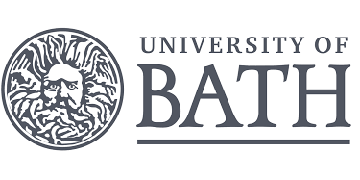University of Bath: Bath secures funding for two major bioscience research projects
The UK’s Biotechnology and Biological Sciences Research Council (BBSRC) strategic Longer and Larger (sLoLa) grants programme aims to catalyse ground-breaking collaborations that advance our understanding of fundamental rules of life, with potentially far-reaching implications for agriculture, health, biotechnology, and the green economy.
The University is a research partner for two of the five new sLoLa projects announced last week, which will receive a total of £19 million.
Understanding how bacterial immune systems work
Resistance to antibiotics (known as antimicrobial resistance) is a growing problem, identified by the World Health Organisation as a top-10 threat facing humanity.
A team of researchers, funded by a £4.6million, five-year programme, will use a wide range of methods to work out how bacterial defence systems shape the evolution of “mobile genetic elements” (MGEs), which play a key role in spreading antimicrobial resistance.
MGEs are segments of DNA that can move from one bacterium to another and can change key traits of bacteria, including antibiotic resistance and virulence (the severity of illness they can cause).
The multi-institutional project team is led by the University of Exeter and includes researchers from the universities of Bath, Durham, Manchester, Bristol, Liverpool and St Andrews.
Dr Tiffany Taylor, from the Milner Centre for Evolution based in the University’s Department of Life Sciences, is leading the work at Bath.
She said: “Bacteria have defence systems that act like our own immune system, to keep invading genetic material (like viruses) out.
“We are just beginning to understand that bacteria have lots of defence systems that work in different ways, but we don’t understand how they are distributed or how they might work together to provide layered defences.
“The team brought together on this grant will approach these unknowns in different ways, from the molecular to the microbial community level.
“This knowledge will help us to understand how bacterial defences shape the movement of genetic material, which is important for limiting the spread of antimicrobial resistance and improving alternatives to antibiotic treatment such as phage-based therapies.”
Learning how membranes repair themselves
A separate project, led by the University of York, aims to unravel the mysterious function of a protein that appears to be able to restore damaged cells, which may lead to improvements in the use of bacteria for industrial biotechnology. The five-year project aims to understand how IM30 proteins, which are found in most bacteria and plants, can sense, and reseal damaged membranes, allowing cells to survive in a range of stresses.
These proteins are known to appear rapidly as ‘first responders’ when the cell membrane becomes damaged, however, while they are recruited to the membrane, how they ‘patch up’ the membrane is unknown, but it is likely to be an ancient sticking plaster that helped early cells become more robust.
The research team includes Professor Susanne Gebhard from the Milner Centre for Evolution (Department of Life Sciences) at Bath, who will also be working with colleagues from the Universities of Newcastle, Cambridge and Nottingham.
She said: “This project is a really exciting opportunity for us to find out how cells can protect their membrane potential, which is basically the energy ‘battery’ of living organisms, from stressful conditions such as antibiotic attack.
“The team we’ll be part of is a unique grouping of researchers brought together to look at this questions from multiple angles and gain insights that in the future may help develop better protected microbes for biotechnological applications or find new therapeutic targets to treat drug-resistant infections.”

